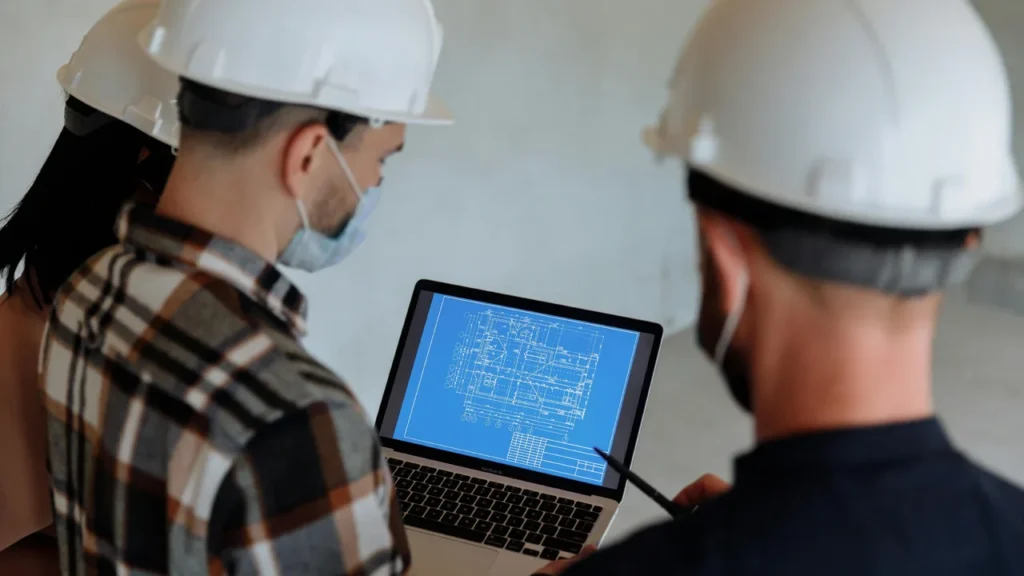In the age of digital transformation, digital twin construction is redefining how modern infrastructure is planned, built, and managed. By merging 3D simulation, data modeling, and real-time analytics, this technology allows construction professionals to visualize, predict, and optimize project performance before physical work even begins. The result is a smarter, safer, and more sustainable construction process that aligns with the principles of Industry 4.0.
Understanding Digital Twin Construction
Digital twin construction refers to the creation of a virtual replica of a physical building, asset, or system that mirrors its behavior in real time. This twin acts as a dynamic model that evolves throughout the lifecycle of a project—from design and construction to operation and maintenance. By continuously synchronizing digital and physical data, construction teams can anticipate issues, reduce waste, and enhance collaboration across all disciplines.
The concept originally emerged in aerospace and manufacturing, where virtual models were used to simulate complex systems and predict performance under different conditions. Today, the same principle has found powerful applications in construction, helping engineers test design scenarios, optimize workflows, and monitor performance even after project completion.
Evolution of Digital Twin Technology
The rise of digital twin construction is closely tied to the evolution of Building Information Modeling (BIM). While BIM focuses on design coordination, digital twins go further by integrating operational data and sensor feedback. This continuous data loop enables real-time decision-making and predictive maintenance, ensuring every stage of the project is informed by accurate, up-to-date information.
Through the use of IoT sensors, drones, and cloud-based collaboration tools, the construction industry now has the capability to manage complex infrastructures remotely. As projects become larger and more data-driven, digital twins are becoming indispensable for smart city planning, industrial facilities, and steel structure building development.
Key Components of Digital Twin Construction
A fully functional digital twin construction system is built upon several core components, each contributing to its ability to simulate, analyze, and optimize performance across a building’s lifecycle.
1. 3D Simulation
The foundation of a digital twin lies in its 3D simulation environment. This component visually represents every structural and mechanical element within a project, enabling engineers to identify potential clashes or inefficiencies long before on-site construction begins. Through detailed rendering, teams can assess spatial arrangements, materials, and safety risks within a controlled digital workspace.
2. Data Modeling
Data modeling serves as the analytical engine of a digital twin. It integrates diverse data streams—from sensors, equipment, and project management tools—to create a comprehensive view of performance and risk. The result is a living dataset that evolves with every phase of construction. For example, if concrete curing time or material delivery changes, the model instantly recalculates project schedules and resource allocation.
3. IoT Connectivity
The Internet of Things (IoT) bridges the gap between the digital and physical worlds. Sensors embedded in machinery, materials, or even worker equipment transmit real-time information to the digital twin. This connection allows project managers to monitor environmental conditions, machinery usage, and energy consumption directly within the model. IoT integration also supports predictive maintenance—identifying component fatigue or energy inefficiencies before they cause costly downtime.
4. Machine Learning Integration
Artificial intelligence enhances the value of digital twin construction through machine learning algorithms that identify patterns and forecast outcomes. By analyzing historical and real-time data, these systems can suggest design modifications, optimize resource distribution, and improve safety measures. This continuous learning loop makes every project iteration smarter and more efficient than the last.
The Digital Feedback Loop
One of the most powerful aspects of digital twin construction is the two-way feedback loop between the digital model and the physical structure. As the construction process unfolds, real-world data is fed back into the virtual model, allowing stakeholders to track deviations and respond proactively. Similarly, design adjustments made in the digital twin can trigger automated updates in field operations, ensuring alignment at every stage.
For example, during the assembly of a complex steel structure building, sensors may detect minor misalignments or stress variations in beams. The digital twin immediately processes this feedback, highlighting the affected area and suggesting corrective measures—preventing future structural issues and reducing material waste.
Applications of Digital Twin in Smart Construction
Pre-Construction Phase
In the early design phase, digital twin construction enables architects and engineers to conduct detailed 3D simulations of the proposed project. They can test various materials, structural configurations, and environmental conditions, ensuring optimal performance before any foundation is laid. This phase also benefits from data modeling that predicts cost efficiency and environmental impact, allowing teams to make informed design choices.
Construction Phase
Once construction begins, digital twins serve as the project’s command center. They provide a real-time overview of progress, worker safety, and equipment utilization. IoT-enabled drones and wearables can feed live data to the digital twin, allowing supervisors to spot bottlenecks or safety risks instantly. Predictive algorithms even suggest workflow adjustments to maintain project timelines while minimizing costs.
Post-Construction Phase
After completion, the digital twin transitions from a construction tool into a facility management system. Through constant data modeling and 3D simulation updates, operators can monitor structural integrity, energy efficiency, and maintenance schedules. In large industrial and steel structure buildings, digital twins help detect anomalies—such as excessive vibration or temperature changes—ensuring long-term safety and performance.
Benefits of Digital Twin Construction
As the construction industry embraces digitalization, digital twin construction offers clear and measurable advantages. By uniting 3D simulation with data modeling, teams can improve every stage of the project lifecycle—from conceptual design to long-term operations.
1. Efficiency and Cost Reduction
Digital twins minimize rework, optimize schedules, and reduce costly delays. Through simulation-based analysis, construction teams can test “what-if” scenarios and identify potential clashes in advance. Predictive analytics also helps in resource allocation, ensuring materials, labor, and machinery are used efficiently. As a result, construction waste and unplanned expenses decrease dramatically.
2. Improved Collaboration and Communication
Traditional construction projects often struggle with information silos between designers, contractors, and facility managers. Digital twin construction eliminates these barriers by serving as a single source of truth. All stakeholders can access the same live data and visual models through cloud-based platforms such as Autodesk Digital Twin Solutions. This transparency enhances collaboration and supports faster decision-making across teams.
3. Sustainability and Lifecycle Optimization
Sustainability is at the heart of modern infrastructure development. Digital twins play a crucial role in minimizing carbon footprints by simulating energy consumption and optimizing material use. Advanced data modeling tools allow engineers to assess a building’s energy efficiency before construction begins, ensuring compliance with green certification standards. Additionally, by monitoring equipment and energy performance post-construction, operators can maintain long-term efficiency and reduce emissions.
Case Studies: Digital Twin Construction in Action
1. Singapore’s Smart Nation Initiative
Singapore’s Smart Nation project demonstrates the potential of digital twin construction in urban development. The government has developed a virtual model of the entire city to plan infrastructure upgrades, simulate traffic flow, and optimize land use. By combining IoT data with 3D simulation, the digital twin provides valuable insights for public safety, energy management, and environmental sustainability.
2. Europe’s Infrastructure Modernization
Across Europe, countries are adopting digital twin construction for transportation and utility networks. The UK’s National Digital Twin Programme, for example, connects infrastructure data across industries to enable predictive maintenance and efficient asset management. In the Netherlands, digital twins of bridges and tunnels allow engineers to forecast deterioration and plan rehabilitation with precision.
3. Industrial and Steel Structure Applications
In industrial settings, digital twins are essential for optimizing fabrication and assembly. For example, large-scale steel structure building projects now use real-time 3D simulation to monitor load paths and installation sequences. During assembly, data from sensors is continuously analyzed to ensure precision alignment, safety compliance, and cost efficiency. These applications prove that digital twins are more than design tools—they are operational assets that deliver measurable ROI throughout the lifecycle of the structure.
Challenges Facing Digital Twin Construction
Despite its vast potential, digital twin construction still faces technical and organizational challenges. Data standardization remains one of the biggest obstacles. With multiple software ecosystems in play, ensuring interoperability between modeling platforms and IoT devices can be complex. Moreover, integrating digital twin systems into legacy project workflows requires training, infrastructure upgrades, and cultural adaptation within construction teams.
Cybersecurity is another pressing concern. As digital twins rely on continuous data exchange, they can become targets for unauthorized access or data breaches. Implementing secure data pipelines, encryption, and access controls is critical for protecting sensitive project information. Additionally, smaller contractors may struggle with the high initial investment required for software licenses, sensors, and data storage.
Future Outlook: The Next Generation of Digital Twin Construction
The future of digital twin construction is deeply intertwined with the advancement of artificial intelligence, robotics, and extended reality technologies. Over the next decade, AI-powered twins will evolve from reactive to self-learning systems capable of making autonomous decisions during construction. Combined with robotics and automated machinery, these systems will enable real-time construction adjustments based on environmental and structural data.
Augmented and virtual reality (AR/VR) will also enhance how digital twins are used on-site. Through immersive visualization, engineers and supervisors will be able to “walk through” virtual construction models, identifying potential issues long before they manifest in the physical environment. As data modeling becomes more advanced, every component—from material selection to structural dynamics—will be simulated and validated digitally.
Integration with Smart Cities and Industry 4.0
As cities adopt smart infrastructure, digital twin construction will form the backbone of future urban management. Connected systems will use sensor data to balance energy grids, manage transportation, and predict maintenance needs for bridges, tunnels, and high-rise buildings. Integration with industrial automation and robotics will further streamline the lifecycle management of steel structure buildings and other complex facilities.
Conclusion
Digital twin construction marks a transformative step in the evolution of the building industry. By merging 3D simulation, data modeling, and real-time analytics, digital twins allow construction teams to visualize the unseen, predict the unpredictable, and manage assets with unprecedented precision. The result is a smarter, safer, and more sustainable construction environment where human expertise and artificial intelligence work side by side.
From planning a small commercial site to managing massive industrial complexes, digital twin technology ensures that every decision is backed by data. As innovation continues to accelerate, the boundary between the physical and digital worlds will blur, leading to the next generation of truly intelligent infrastructure systems.



